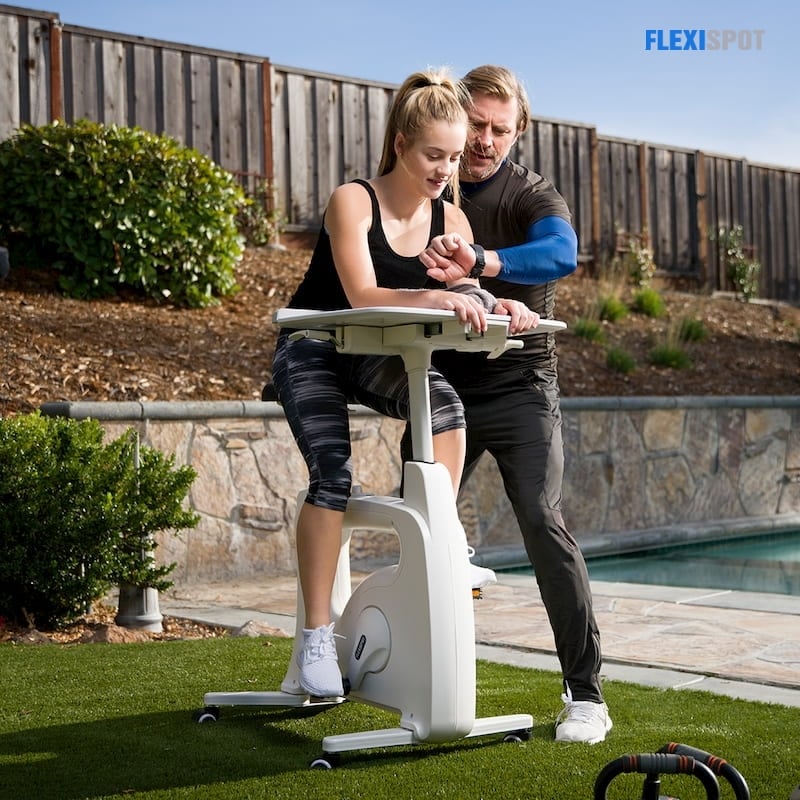Employee motivation is the lifeblood of any successful business. Driven employees are more motivated to work harder and more productively to help the organization meet its goals. On the other hand, an uninterested workforce has the reverse effect, resulting in a lack of engagement and poor productivity.
According to a poll, only 21% of employees strongly agree that they are inspired to do excellent work. This type of data reveals the gap between employers and their employees. But, top management is where motivation originates. Employee performance is improved when companies and managers promote and involve their employees.
You're not alone if you've explored a range of incentives yet are still experiencing the unpleasant costs of poor motivation. Even the top managers have to go outside the box regularly to develop innovative and dependable ways to encourage their personnel.
The following employee motivation strategies can improve worker satisfaction and productivity in the office.
Say Thank You
Sometimes all it needs to motivate workers is a simple "thank you for your efforts." According to research, 70% of employees feel that they would be much more encouraged to perform more if management expressed gratitude more frequently. It's a low-cost, successful technique for motivating individuals in the workplace. Employers are commonly preoccupied with their own work and hence forget non-essential tasks such as thanking employees. Nonetheless, you can make the process easier by handwriting individual thank-you notes beforehand. Instead of sending out the same generic greeting to all employees, incorporate a personal note appreciating their professional behavior.
Trust Them
They will make things happen sooner than you anticipate when you let them know you come to rely on them. A statement of support can make a big difference. Let them know you trust them to perform their best work, and they will seldom let you down.
Provide Feedback
Employees well receive active feedback approaches that are linked to organizational and individual achievement. People are drawn to brief performance reviews because they provide more quick adjustment and improvement than typical quarterly or monthly evaluations. Continuous performance feedback instills a stronger sense of commitment to your company's objectives in every employee and fosters long-term connections. Employees also value repairing faults quickly and moving forward to new opportunities to resume work on new projects.
Set Weekly Goals
You want ambitious goals, but you also want to set modest goals to keep people invested along the way. Rather than aiming for a billion dollars this year, concentrate on selling more than the previous weeks—something that will help you get there. The team should then be rewarded for completing the target with an afternoon off, a dinner, or something similar. They'll realize that your objectives are reasonable, and that hard effort benefits everyone.
Encourage Breaks and Exercise
Another employee incentive strategy that boosts performance and happiness at about the same time is to provide regular quick breaks all through the day. Employees' overall performance is often improved when they are encouraged to take 5 to 10 minutes hourly or so to move around the workplace or go to the cafeteria for a snack. They are much less likely to get influenced when at their workstations by their smartphones. Employees who are able to work out regularly also perform much better. Promoting employees' overall health improves productivity, whether your organization can give club-level fitness activities, provide standing desks, desk bikes, and active seating chairs, or merely encourages activity during lunch breaks.
Transparency
Keep the team informed about what's going on with leadership so there are no misunderstandings and everyone has an opportunity to ask any questions and provide input. You'd like your employees to feel involved in critical decisions and dedicated to the direction of the business. This has aided in maintaining motivation as well as increasing employee loyalty and confidence.
Schedule Flexibility
Flexible scheduling lowers infrastructure costs while increasing employee performance. Thanks to advanced technologies, many organizations are experimenting with flexible scheduling for some individuals, which allows for part- or full-time remote working. Employees who are permitted to work remotely at least part-time are far more motivated and satisfied to be productive, according to several studies and actual experiences. Employees' positive attitudes and commitment are also boosted by a flexible management approach to personal and family scheduling demands.
Boost Employee Creativity and Input
Many managers overlook the need to provide employees a workplace perspective, as simple as it may seem. Employee engagement and efficiency can be boosted by emphasizing listening as a critical skill. Everybody has an opinion about how to make things better in the company, and a method of soliciting input from everyone on a frequent basis keeps everyone involved and driven to develop and enhance the workplace.
Invest in New Furniture
Employees may get frustrated if they are forced to sit in uncomfortable seats and use badly crafted desks for six or more hours each and every day. Unhappy employees are less keen to push themselves. Upgrade to modern, better office furniture to keep this from happening in your company. For example, replacing inexpensive plastic chairs with ergonomically designed office chairs, like these from FlexiSpot, will almost certainly improve morale and productivity. Employees will feel better and less exhausted instead of leaving the premises with a sore back.
Learn What Triggers Them
Learn about their favorite and least favorite projects, as well as the company's overall aims, and answer their inquiries. Determine their objectives and then engage in their career development. Listen to their recommendations during one-on-one coaching because they're the greatest at what they are doing. Honor their schedules and time away from work, and never put their targets against one another.
Have Recognition Rituals
At the beginning of every management and executive meeting, each division leader may recognize someone from their team who has gone above and beyond for the business or a client. Team members are motivated by this positive feedback mechanism, and management should be held accountable for employee rewards and recognition.
Following these methods will encourage employees to work harder and more productively in the office. Above all, interact with your team and recognize their professional accomplishments.







